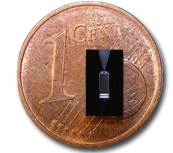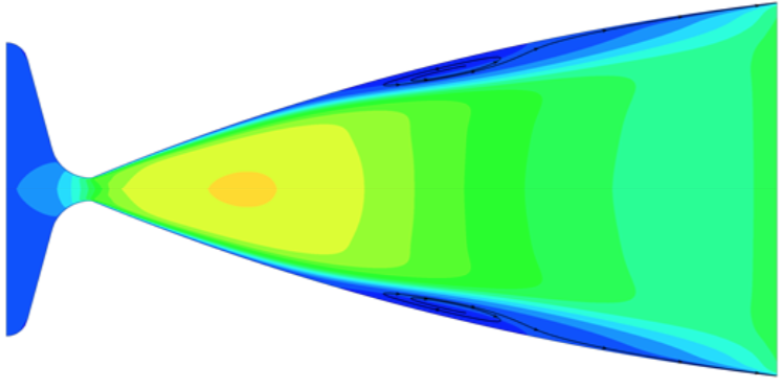Propulsion and Energy
A main trend in propulsion and power is to enhance efficiency and thus reduce fuel consumption by increasing system pressure. This trend is unlikely to reverse, in many applications, supercritical pressures are reached and are here to stay.
Accurate simulations of propulsion and energy systems require careful multi-physics modeling of fluid properties, chemistry, and equations of state. Modern liquid propellant rocket engines (main and upper stage), jet engines at take-off, and Diesel engines inject their fuel at supercritical pressure. New power cycles target supercritical pressures to gain efficiency, using CO2 or organic compounds as working fluids. Heat transfer in nuclear power plants and solar thermal receivers may occur under supercritical conditions.

Figure: German Aerospace Center (DLR)
Liquid propellant rocket engines
Multi-scale rocket engine modeling provides a concise picture of the different physical phenomena that determine engine performance and behavior. Steady-state Reynolds-Average-Navier-Stokes (RANS) solutions can be used to assess acoustic properties, injector placement, and overall regenarative cooling requirements. Large-eddy simulations (LES) allow to study the turbulent mixing process of propellant injection, turbulence-combustion interaction, or ignition. Direct numerical simulations (DNS) resolve turbulent scales and may allow for accurate estimation of molecular and thermal diffusion, which can be used to calibrate models for LES and RANS. [1] [2] [3] [4]

Micro-scale thrusters
The goal of the European PRECISE project [website] was to develop a microscale propulsion system for accurate control of satellites in a formation flight mission. The micro-electro-mechanical system (MEMS) thrusters, including feed lines, catalyst bed, and nozzle, are etched into silicon wafers. This allows for simple mass fabrication, but introduces the difficulty of a shallow planar nozzle shape. Numerical investigations showed that full 3D simulations and accurate thermo-chemical modeling of the exhaust gas are necessary to predict engine performance. Further, a classical nozzle design was shown to lead to fully choked flow rather than efficient expansion; an alternative design increased thrust by 30%. [article]


Thermal break-up
A set of low velocity supercritical nitrogen injection experiments has become a standard validation case for high pressure thermodynamic computational fluid dynamic (CFD) codes, as a stepping stone for rocket engine simulations. However, six of the eight published axial density profiles show an immediate drop of density upon entering the chamber, which could not be explained by theory and has never been captured by CFD. It turns out that the transcritical fluid is uniquely sensitive to heat addition, introducing a new, thermal, break-up mechanism that seems to be unique to transcritical fluids. [article]

Supercritical CO2 oxy-fuel combustion
Cycles using supercritical CO2 as working fluids promise higher efficiencies at significantly smaller builds. The Allam cycle in particular is a new concept that additionally allows for a complete capture of the combustion products at sequestration-ready pressures. Heat addition occurs in direct-fired oxy-fuel sCO2 combustors, where fuel (e.g. natural gas) and oxygen are injected and burnt directly in the sCO2 stream, without requiring an additional heat exchanger. [article]
